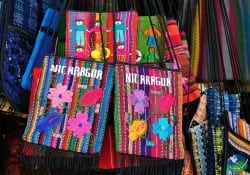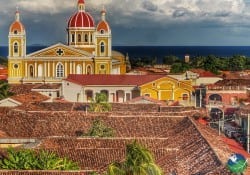European and African influence
The Nicaraguan culture is influenced by the colonization of Spain and Britain as well as influences from Africa, primarily on the Caribbean coast. Spanish is the official language of Nicaragua but on the eastern coast, creole-English can be found along with other indigenous languages. Nicaraguan people are known for their hospitality and friendliness and travelers will enjoy getting to know them and the country. Nicaragua is also known as the land of poets, the famous writer who helped create the Spanish-American literary movement, Rubén Darío, is from Nicaragua.
Religion
Religion plays an important role in the culture here, as well as music and dance. Religious celebrations are important affairs and are well attended with dances and music. For many Nicaraguans saints are inspirations, and their lives and causes are celebrated. Each city has their Patron Saint that has been designated since colonial times. Festivals honoring the cities Patron Saints are called Fiestas Patronales. These festivals have celebrations that last for several days in a row and are very colorful and filled with the culture of Nicaragua.
Music and Dance
Nicaraguan music and dances are a mixture of different cultures, born from different heritages such as the indigenous tribes, European conquerors, and African slaves. Dances from the Caribbean coast have a lot of influences from Africa but are also danced near the pacific and other parts of Nicaragua. The different regions have their traditions. However, Nicaraguans consider themselves to share one cultural identity.
Spanish and Creole Roots
The cuisine is a mixture of indigenous, Spanish, and Creole cuisine. Over the years these three cuisines have influenced each other and blended into what the cuisine is today. The traditional cuisine usually varies on the Pacific and Caribbean coast; the main difference is the cuisine of the Caribbean coast predominately uses seafood and coconut.
Signature Foods
One of the most staple foods is corn; it has been the base in the cuisine of Nicaragua since pre-Colombian times. It is used widely in a variety of dishes, such as drinks, main dishes, snacks, and sweets. Rice and beans are also a staple in Nicaraguans diet. A common dish made with these two items is Gallo Pinto; this dish is eaten for breakfast and usually served with eggs.
Traditional Dishes
Vigorón is a traditional Nicaraguan dish and is very delicious. A plantain leaf is usually placed on a plate followed by yucca, chicharrón, then a salad made out of cabbage and tomato.
Indio Viejo is a soup consisting of shredded meat, onions, sweet peppers, and tomatoes. Tortillas are placed in water and ground until forming a dough; then the dough is fried with the meat and vegetables, at the end a broth is added.
Nacatamal is corn dough filled with pieces of pork or chicken, rice, potatoes, tomatoes, onions, and sweet peppers. The mixture is then placed in plantain leaves, which is folded tight and tied with thread then boiled.
Tres Leches is a common dessert in the cuisine of Nicaragua. It is a delicious cake made with three types of milk. Then a layer of icing is placed on the top. This is the perfect end to a delicious Nicaraguan dinner!
























Follow Us